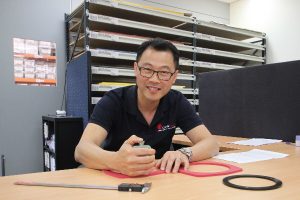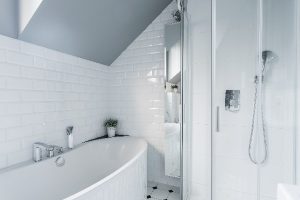Blending tapware aesthetics with watertight performance
Sometimes the challenge of balancing elegant architectural aesthetics with functional excellence can come down to getting small details right.
This was the case recently, when engineering problem solvers CSGtech partnered with a quality tapware and plumbing company to custom-engineer one of its high performance solutions to sometimes complex problems where interfacing components must achieve durability, reliability and precision.
The challenge, in this instance, was to optimise the face-plate seal of a shower tap mixer and prevent water from entering the housing, through the provision of a watertight solution.
CSGtech trialled several different prototypes to find a material that would achieve the required watertightness without compromising the sleek aesthetic of the shower tap by adding additional materials on the shower side.
“A solid O-ring wasn’t going to work because it couldn’t compress adequately to provide a watertight seal. Even standard rubber couldn’t be compressed to the required levels, so we had to design a new solution,” CSGtech manager Vinh Lam explains.
After further designing, modelling and testing, CSGtech engineers found a foam solution, using closed cell EPDM (ethylene propylene diene monomer) rubber with adhesive, which was precision manufactured to the correct thickness and density for the application.
“There was a pre-determined clamping force we had to work with. We couldn’t add more force, because this would interfere with the aesthetics of the tap, so we had to find a component that created a watertight seal within the existing clamping force.
“The foam was an effective solution because it filled in natural gaps in the material surfaces. An aluminium surface, for example, looks consistent to the naked eye, but on closer inspection, it has natural grooves and holes where water could seep through if using other types of seal. The foam we selected is flexible enough to flow into the shape and fill any of these holes,” he says.
“Closed cell refers to the cellular structure of the material. It means that each bubble is individual, and no water can get through. This is the opposite to a kitchen sponge, for example, which is open, and allows water to flow through from one side to the other.”
Providing a watertight seal within the existing design constraints was essential to prevent water from entering the housing, or other parts of the house, behind the shower wall, where dampness could lead to mould and other problems.
“The alternative to finding a sealing solution, was an expensive redesign of the whole product, so our customer was very happy that we were able to provide them with an ideally suited material.
“This customer has been proactive in seeking out a sealing solution before taking a product to market. They have realised that the last thing a business needs is to sell a beautiful, modern and functional shower or tap that leaks water behind the wall face where it isn’t visible, but can cause ongoing problems to the house or building.
“We encourage any company developing a product that requires a seal to approach us as early as possible. If our engineers can be involved in the design stage, it can often result in a standard, machinable part being specified, which can significantly reduce costs, especially compared with a situation where a company comes to us after the product has been installed, and it has begun to leak.”
CSGtech’s engineering team solves complex challenges involving seals and interfacing surfaces in production, process, reticulation, automation and dispensing technology. The company draws on a network of quality, trusted national and international suppliers of materials used for its custom-engineered products and compliance solutions, which are arrived at in partnership with clients seeking time-efficient and cost-efficient outcomes.


